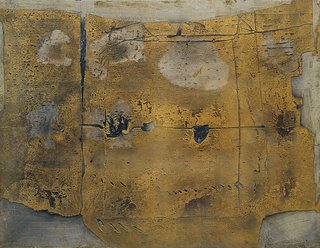
Joseph Beuys' Expanded Concept of Art gives us a place to start. For the time being, I am going veer around the political ramifications involved in selecting this idea as a point of departure, though, I promise you, in the long run it will be impossible to avoid. But what Beuys gives us when he states something like ART=CAPITAL (or Kapital=Kunst) is a way of looking at our everyday activities under new light. He is implying that things such as art and work cannot be as divisively delineated as we may once have wanted them to be, but that they are, in essence, the same thing.
Beuys' classes at the Düsseldorf Academy of Art often had many times the number of students that his fellow professors would allow, and this often caused him trouble with his peers and the academy in general. But Beuys relished the conflict, which he felt in some way served his purpose of expanding on the concept of art, as well as expanding the number of people that were being infected with his ideas. Art was to go outside of the studio and gallery, in fact it already had. Everyday life in or out of work is ripe with types of behavioral effects commonly thought of as "creative," though the specific behaviors were not often thought of that way. After all, everyone is an artist, in some way or another, since we all survive from day to day somehow, and that takes some clever maneuvering and revamping of our ideas, does it not?
His students, therefore, were not training to become "artists," per se, not in the typical sense. Instead they left his class and went on to be business associates, teachers, social workers, what have you. Most art teachers would consider that a great failure, but to Beuys, it was the agenda. It was social sculpture.
It would be hard to imagine all the tools Beuys passed on to his students, and what it is that they had taken with them, if anything, that others working in the same fields may not have had. But we can begin to take an accounting of our own work, and understand what we have brought to it from whatever arts we may have involved in.
Is it only a coincidence, for instance, that there are so many classically trained musicians working in information systems technology? Or is there something in the cognitive training of a musician that seeds the ability to think in the same structures needed to think in computer languages. If so, what does this begin to imply about the relationship between our art and our work, and what does it say about the possibility that work and art, instead of hindering each other's progress, may actually be used to support each other, if managed intelligently?
For those of you who have creative ambition, but find yourself working in a field that is not of your choosing, might this offer a route to think upon? To me, it does. And if it can make any difference to my work, my life and my art, it may only involve changing the intention behind everything we do.

